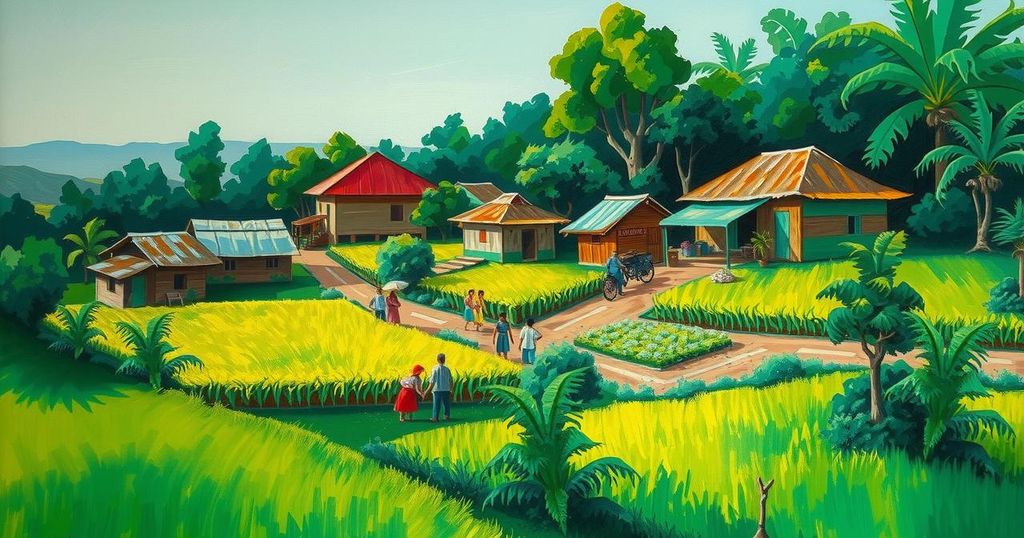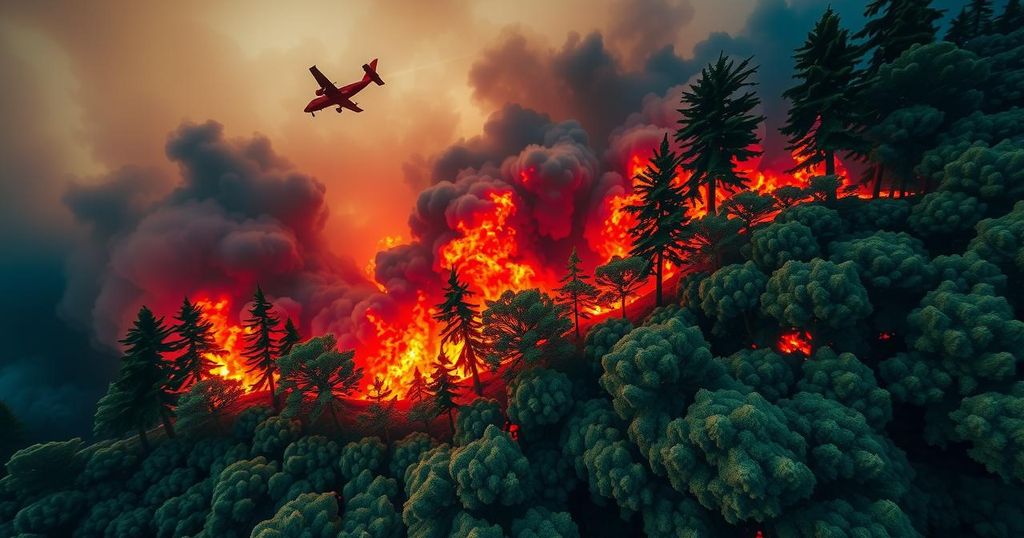Unprecedented Event: Six Tropical Cyclones Active Concurrently in Southern Hemisphere
On Tuesday, six tropical cyclones were concurrently active in the southern hemisphere, three in the south-west Pacific and two in the south-west Indian Ocean. Notable cyclones include Severe Tropical Cyclone Alfred with category-4 strength and Severe Tropical Storm Honde. The occurrence of multiple storms showcases the significant meteorological activity in these regions.
On Tuesday, an unusual weather phenomenon occurred as six named tropical cyclones were simultaneously active in the southern hemisphere, with several occurring close to one another. Notably, three cyclones formed in the south-west Pacific, including Severe Tropical Cyclone Alfred, which originated in the Coral Sea on 20 February. By Thursday, Alfred escalated to category-4 hurricane strength, with sustained winds of 105 mph (170 km/h) and gusts reaching 140 mph.
Alfred is currently tracking southward parallel to the Queensland coast, prompting the Australian Bureau of Meteorology to issue warnings for hazardous winds and rough seas. Although it is not anticipated to make landfall, the Bureau is closely observing its trajectory. Additionally, two other storms in the south-west Pacific, Rae and Seru, reached maximum intensities of category 2 hurricanes.
Tropical Cyclone Rae, which formed on 22 February north of Fiji, traveled south across the islands. In contrast, Tropical Cyclone Seru, emerging on 24 February over the southern Solomon Islands, moved southward, bypassing Vanuatu and New Caledonia. Despite remaining offshore, Rae inflicted notable damage on some Fijian islands due to heavy rains, winds of 100 mph, and substantial waves.
Severe Tropical Cyclone Bianca was active from 18 to 27 February in the Timor Sea, achieving a peak intensity equivalent to a category 3 hurricane. Traveling west before veering south, Bianca circumvented the Australian mainland without making landfall. Meanwhile, two additional cyclones developed in the south-west Indian Ocean on Monday, bracketed by Madagascar.
Intense Tropical Cyclone Garance, equivalent to category 3, formed to the north-east of Madagascar and moved southward. Following its passage west of Mauritius, Garance is expected to impact Réunion Island with gusts up to 120 mph and potentially deliver 600 mm of rain. Concurrently, Severe Tropical Storm Honde, a category 1 storm, developed in the Mozambique Channel, traversing the southern tip of Madagascar.
While the occurrence of six concurrent named storms is infrequent, it is not without precedent. The Pacific Ocean has previously documented six simultaneous named storms in August 1974, whereas the Atlantic recorded five named storms in September 1971.
In conclusion, the simultaneous activity of six tropical cyclones in the southern hemisphere represents an extraordinary meteorological event. Notable storms include Severe Tropical Cyclone Alfred, Rae, and Seru in the south-west Pacific, followed by Bianca and Garance in the Indian Ocean. Such an occurrence, while uncommon, highlights the dynamic nature of meteorological phenomena in this region.
Original Source: www.theguardian.com




Post Comment